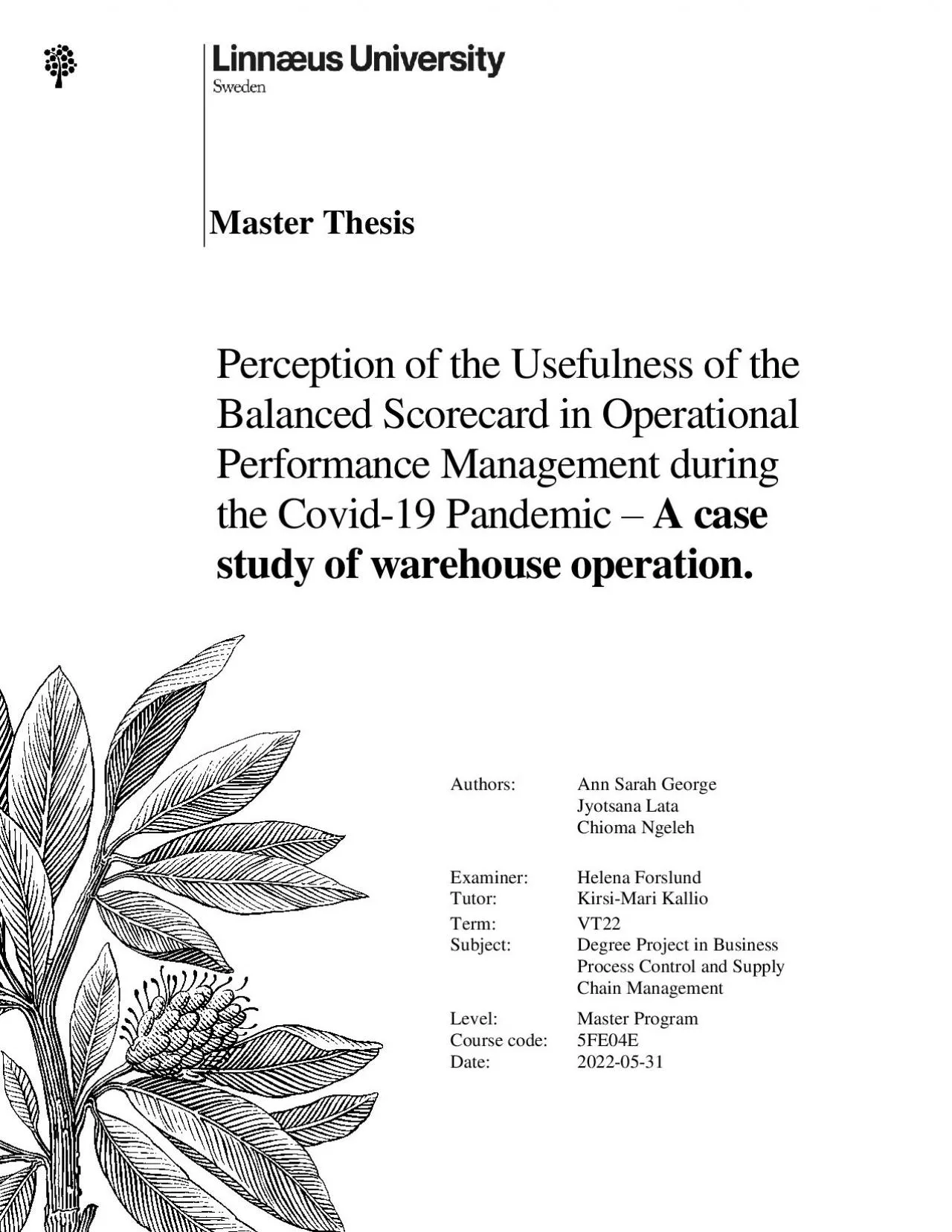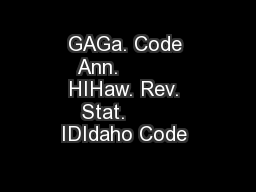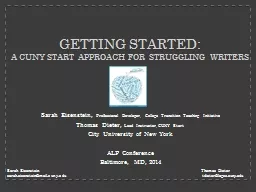PDF-Ann Sarah George
Author : mila-milly | Published Date : 2022-09-08
Authors Jyotsana Lata Chioma Ngeleh Examiner Tutor Helena Forslund Kirsi Mari Kallio Term Subject Level VT22 Degree Project in Business Process Control and Supply
Presentation Embed Code
Download Presentation
Download Presentation The PPT/PDF document "Ann Sarah George" is the property of its rightful owner. Permission is granted to download and print the materials on this website for personal, non-commercial use only, and to display it on your personal computer provided you do not modify the materials and that you retain all copyright notices contained in the materials. By downloading content from our website, you accept the terms of this agreement.
Ann Sarah George: Transcript
Download Rules Of Document
"Ann Sarah George"The content belongs to its owner. You may download and print it for personal use, without modification, and keep all copyright notices. By downloading, you agree to these terms.
Related Documents














